-
Posts
12 -
Joined
-
Last visited
Content Type
Profiles
Forums
Events
Posts posted by wheelMetal
-
-
!
Moderator Note
Last chance to do the maths and provide a bit of rigour - it doesn't have to be right (in fact if it is right it will show that your OP is incorrect) but it does have to be provided. The devil is in the details in perp motion machines- you can even avoid engaging with friction and just look at the torques. A normal wheel (in the absence of frictions) will continue to turn as it has an angular momementum and has zero external torque - see if you can provide a full (and it must be full) list of the torques on any wheel that you claim to be overbalanced.
This must be your next post or the thread will be locked.
Sadly I have no idea how to do the maths that you're expecting, but before you locks the thread, at least indicate how you will do the maths, I can learn from it.
0 -
The weights are at the lowest possible point in their respective boxes, which means the wheel is bottom heavy and will no turn by itself.
Bottom heavy?? Do you mean the center of mass is at the bottom, so it will not turn.
Or if the wheel is top heavy (center of mass above the pivot/fulcrum), then it turn by itself; or it makes a big spin because the center of mass can shift longer from top to bottom until it hits the center.
From your perspective, are you expecting the wheel should make big spin, or big rotation for it to turn by itself?
The way the wheel rotates may not be what you expect, have a look at the wheel animation link below
https://youtu.be/9N9gJP494cQ?t=6
Notice how the wheel rotates; it stops, then revolves a little, then stops again, then revolves again... sort-of like how the second hand of the clock moves.
What happen is this,
- wheel is balanced, so it stops;
- then the balls roll down, wheel is unbalanced (center of mass shifts slightly out of center), so it revolves;
- wheel reaches its balanced (center of mass returns to center), so it stops;
- but the balls roll down again, wheel unbalances, so it revolves again
The wheel is not making big spins, but rather a continuous small rotation. A stronger wheel, with a lot of pairs, should ideally create a smooth rotation (although the wheel design in the animation is an odd-ball by itself, which works a bit different than others, but it shows a good clock-style rotation). And yes, the bottom of the wheel is heavy, or the whole wheel is heavy, which will have other problems.
Simplify a bit
- most people would think of the wheel doing big spin/big rotation, which is more catered to motion wheel;
- whereas there is another type of rotation, continuous small rotations, which the wheel would seem to be doing one whole revolution by our naked eyes.
0 -
@wheel
Hint, simplify to 2 balls. Then, double and maybe double again. I think you will see that 2 can't spin without adding energy, and any multiples cannot either.
Here's another way to see, when adding the swinging weights with the balls.
Refer to the image;
when having 2 pairs (4 circles and 4 swinging weights), notice there's a small altitude rise of the circle on the right side of wheel (the wheel is not rotating at this point), and
when increasing to 4 pairs, notice the increase of altitude rise of the circle (still not rotating at this point).
Imagine what happen when keep increasing the pairs, the circle might rise to the point where it can roll down (which will increase the torque force on the other side), and the wheel will start to balance itself by rotating, always maintaining the risen altitude of the circle.
0 -
can you describe the simplest wheel that you believe will be overbalanced and thus rotate permanently? Then a member may be able to take the time to actually prove it will not work - the latest with 14 (?) moving parts will also not work but the maths to show it would be incredibly longwinded and boring
latest with 14 (?) moving parts
- If you're talking about those image demonstration, those are exaggerated so that people can at least see some differences or get some idea.
Agree, math is really tedious
Can you describe the simplest wheel that you believe will be overbalanced and thus rotate permanently?
- I really couldn't
0 -
It's one thing to claim that the wheel will become unbalanced and thus rotate, it's quite another to show that it will do so with a valid application of physics. One is snake oil, the other is science.
Which is why this was post under "Speculations", still under speculation, the concept (it still need a concept, or how it's supposed to function) is based on unbalanced (there are others like motion & magnet etc), but doesn't mean that it can actually work.... this is still speculation.
0 -
With a balanced wheel having circle risen up permanently (and swinging weights facing to the left), and when the risen circle start to roll inward (or outward), the left torque force of the wheel increases and decreases on the right; or the wheel become heavier on the left side.
So when the wheel is heavier on the left, it needs to balance again by rising the circle to increase the torque force on the right and vice verse.
And here's something to think...
the circle rolls down, but it's not doing anything.... what a waste;
let the circle (while rolling down) do something, do something that change something permanently.... like lifting a swinging weight up.
0 -
The increase of torque that your machine hopes to utilize through gravity at the 9 O'clock position is theoretically at maximum due to its tangential position to the force of gravity. This assumed momentary gain is unfortunately countered by the simultaneous movement towards the center of the balls at 3 O'clock. The loss in energy in this system, that cancels this assumed gain in torque, is when the balls move inward they also proportionally slow down in relation to the wheels rotation. (relative to rotation) This loss of momentum by way of decreased velocity of a portion of the rotating mass is directly in opposition to your gain in assumed torque. So you end up with a net loss of energy.Children on a swing will shift their center of gravity to utilize this torque you refer to. They are of course using their own (outside) energy to facilitate the gravity's energy to overcome the losses in the system.
You would need to start your wheel with outside energy. Friction within the system tips the forces of nature against you and your wheel will slowly come to a stop.
Are you describing a motion wheel, using motion to achieve sustain rotation ?
The wheel design is basically utilizing the weights positioning to achieve a forever unbalanced state (one side of the torque force will always be higher than the other side), which in turn cause continuous rotation. It's not using motion, but all these tangential force will come into play later after the unbalance wheel rotates.
And yes, the children on a swing will use an outside force, the ball rolling down will push up the swinging children, which the ball is utilizing gravity to roll down.
It's good to see someone having a different interpretation of the wheel design
******************************************************************
When combining the balanced wheel of swinging weights & the balanced of standard overbalanced wheel together, the result is still a balanced wheel.
Simply put, a balanced wheel is having torque force equal on both left & right sides a.k.a net force zero, so when combining two wheels both having equal torque force on either sides, the result is still a wheel having net force zero.
With the combination of two balanced wheels forming into one balanced wheel, and this time by tilting the swinging weights facing to the left, the torque force on the left side increases.
The wheel, in order to balance itself, slightly revolve CCW or raise up the circle to increase the torque force on the right (and also decrease on the left). The wheel at this point is balanced with the circle staying at a risen position on the right side (and lower position on the left). Take note that the wheel is not going to revolve back to its previous position, the circle continue to maintain its risen position.
So what will happen to the wheel when the risen circle on the right side start to roll inward (or roll outward on the left) ?
0 -
When a pair of swinging weights face to the left side, torque force increases on the left & decreases on the right. Or the wheel's center of mass shifted to the left side.
And when more swinging weights face to the left, more torque forces increase on the left & vice verse.Based on the standard overbalanced wheel design,
When the circle on the left and right are symmetrical to each other, the wheel is balanced; or the torque force on the left and right are equal a.k.a net force zero.
And when given a push to turn the wheel CCW, the left circles lower down and right circles rise up; or left torque force reduces and right torque force increases; or the right side of wheel becomes heavier.
When taken into account the external push that turn the wheel, although the right torque force on the wheel increases, but if adding the push force and the reduced left torque together, then left and right force of the wheel is actually equal a.k.a net force zero;
And by removing that push, the wheel will return back to the position where the circle on left and right are symmetrical. Take notice that friction doesn't play much of a role at this point.0 -
Now slowly going through the explanation
Images to show a very fundamental demo of how the swinging of the weight is affecting the wheel's center of mass
Images showing a fundamental characteristic of the swinging weight, by arranging the weights cross image to each other, the wheel remains balanced.
0 -
Simulations don't have to follow the laws of nature. An actual wheel does.
Which is why this was post under "Speculations".
0 -
Based on the below simulation wheel gifs
The general description of the concept of the wheel
1. the light swinging weights provide extra torque force on the left side (descending)
2. the wheel, in order to balance itself by increasing torque on right (decreasing on left), raise up the heavy ball on the right side (ascending)
3. when the heavy ball is lifted high enough to roll inward (or roll outward) while also push up the swinging weight, the result is an increase of torque force on left, decrease on right
4. the wheel, to balance itself again, rise up the heavy weight again, heavy ball roll inward/outward again..... and so, the process repeat over & over
Questions/Issues
5. due to the torque gain from swinging weights, the heavy ball is already and almost always at the risen position from the start, so
- is there a need for an initial external force/push by human factor ?
- in this case, the torque gain from swinging weights is equivalent to the external human pushing force, except
- friction will reduce the external force, but not with the torque gain from swinging weights.
6. there is energy constantly input to the wheel
- heavy ball rolling down, that's influence by gravity, and
- when heavy ball push up the light swinging weight, that's heavy ball doing work, or is it gravity doing work ?
7. can the heavy ball rise up high enough, so that it can roll down and push up the light swinging weight, as the swing weight is also blocking the heavy ball from rolling down ? If it can't, then all will fail.
New perception to see Overbalanced Wheel
8. comparing solar cell and overbalanced wheel
- solar cell is a device that converts the energy of light into electricity;
- what if overbalanced wheel is simply a device that converts the energy of gravity into other form of energy, just like a solar cell ?
- or what if the wheel is a device that converts the linear path of gravity energy into circular type ?0


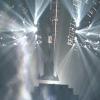
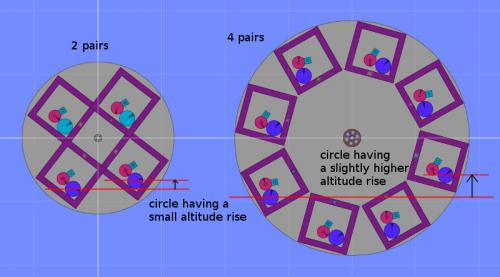
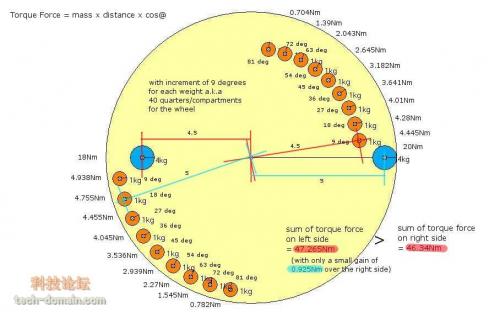





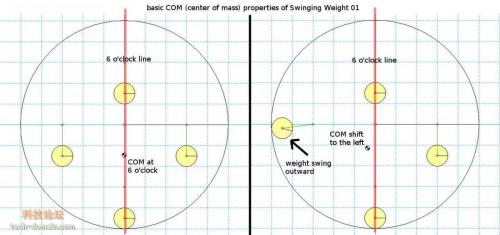
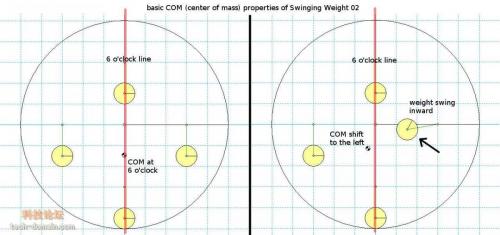

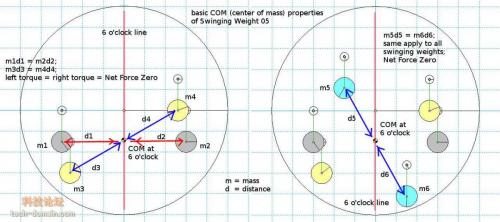
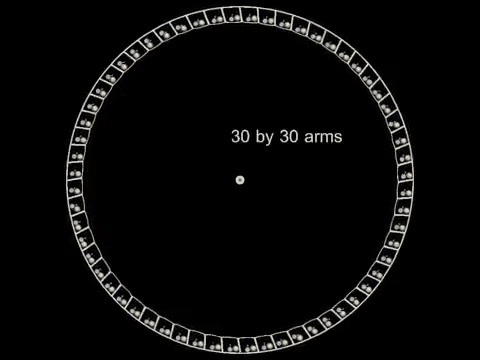
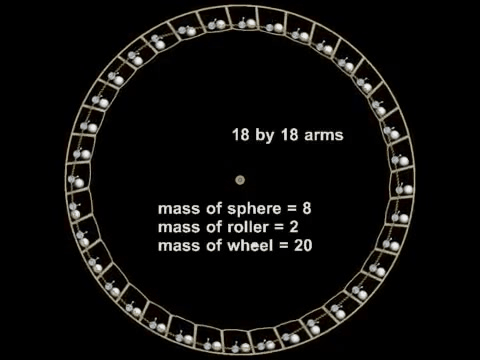
A new perspective on Overbalanced Wheel
in Speculations
Posted
This is where the swinging weights come into play. First by combining a balanced swinging weights & a symmetry wheels together, we still get a balanced wheel that looks symmetry.
Then placed the swinging weights on top of the circles, it changes the symmetry look of the wheel by rising the circles, but the torque force on both sides is still equal.
At this point while the wheel is still balanced, the circles roll down, and that changes the balance of the wheel, so the wheel has to revolve a few degrees to balance itself.
All the images example above are just basic explanation
Notice that the swinging weights will either be facing to the left, or pointing downward, but never face to the right. So the swinging weights will always increase the torque force on the left side.
Notice the circle weights have an altitude higher on the right side of the wheel, and lower on the left side. So the circle weights will always increase the torque force on the right side.
Let's say the image above, torque gained by swinging weights cancel out torque of the risen circles, the wheel is in balanced state, notice some of the circles are in the rolling down position.